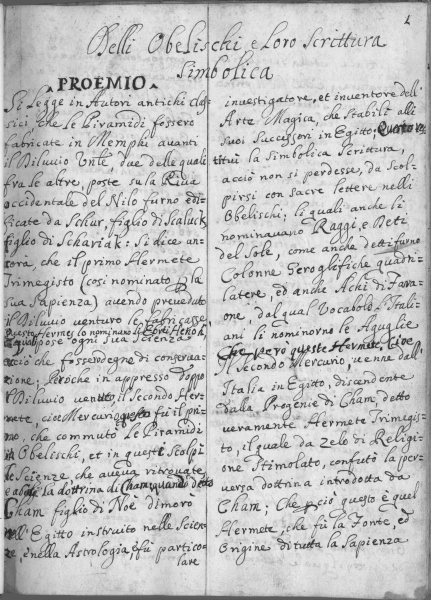Pietro Bracci's 'lost' manuscript
I Geroglifici ed Obelischi Eggizzi, 'opera postuma inedita di Pietro Bracci', 1767
Pietro Bracci (1700-1773) was a leading Roman sculptor of his time. Among his most important works are the colossal Oceanus (or Neptune) of the Trevi Fountain and the sculptures for several funerary monuments in Rome, including the tombs of Pope Benedict XIII in the Basilica of Santa Maria sopra Minerva and that of Pope Benedict XIV in the Basilica of Saint Peter. He is also renowned for a group of busts and a significant number of drawings which are now dispersed among numerous museums and collections around the world, including the Canadian Centre for Architecture and the Musée des Beaux-Arts, both in Montreal, and the Ashmolean Museum in Oxford.
However, based on historical inventories of Bracci's manuscripts, most of them now lost, Bracci had many interests, including architecture, military engineering and sundials, to mention a few. An unpublished manuscript by Bracci on Egyptian hieroglyphs, probably started in the 1750s or 1760s but left unfinished, and which was believed to be lost, was in fact purchased by Sir Alan H. Gardiner, who later presented it to the former Ashmolean Museum library, and thence transferred to the Griffith Institute archive. This work, which constitutes one of the oldest holdings of the archive, is now being prepared to finally see the light of day for the first time. To celebrate Bracci's birthday in the month of June - there is some uncertainty about the exact date (16th or 26th depending on the author), we present here scans of some individual pages of this unique "jewel", a new surviving example of a pre-Champollion attempt to read and understand the ancient Egyptian hieroglyphic script, which is strongly influenced by the work of Athanasius Kircher.










 Stumble It!
Stumble It!

No comments:
Post a Comment